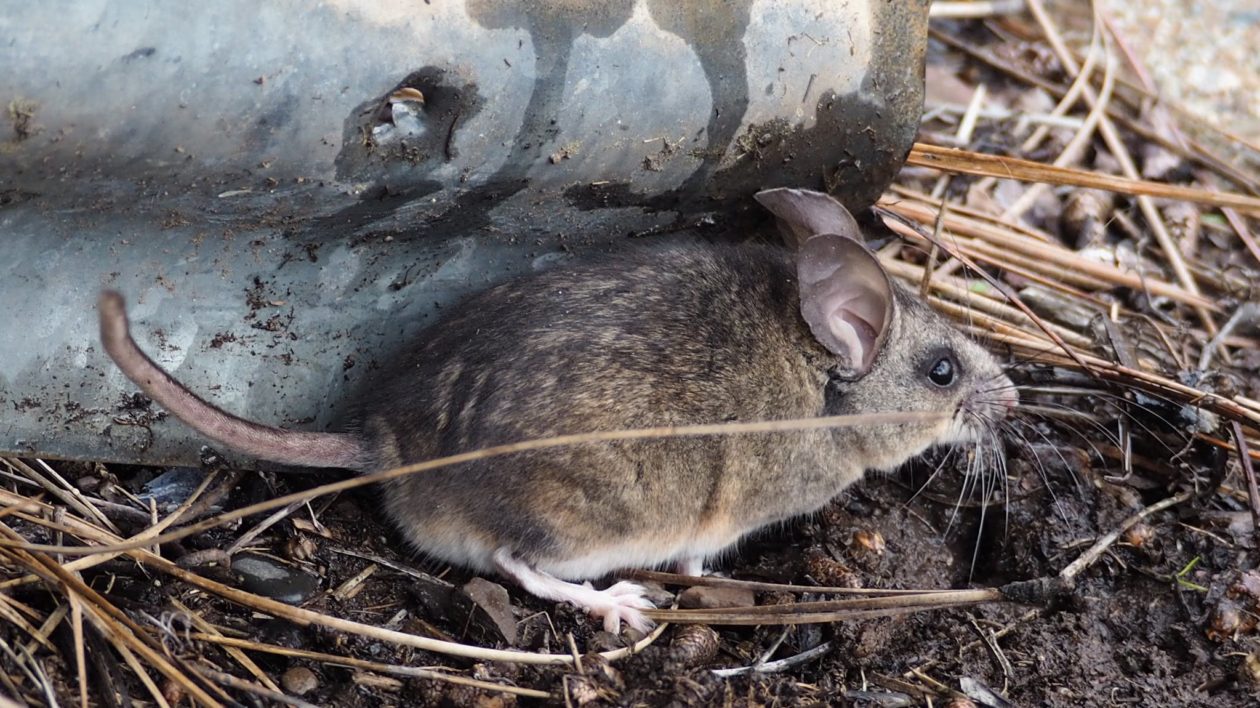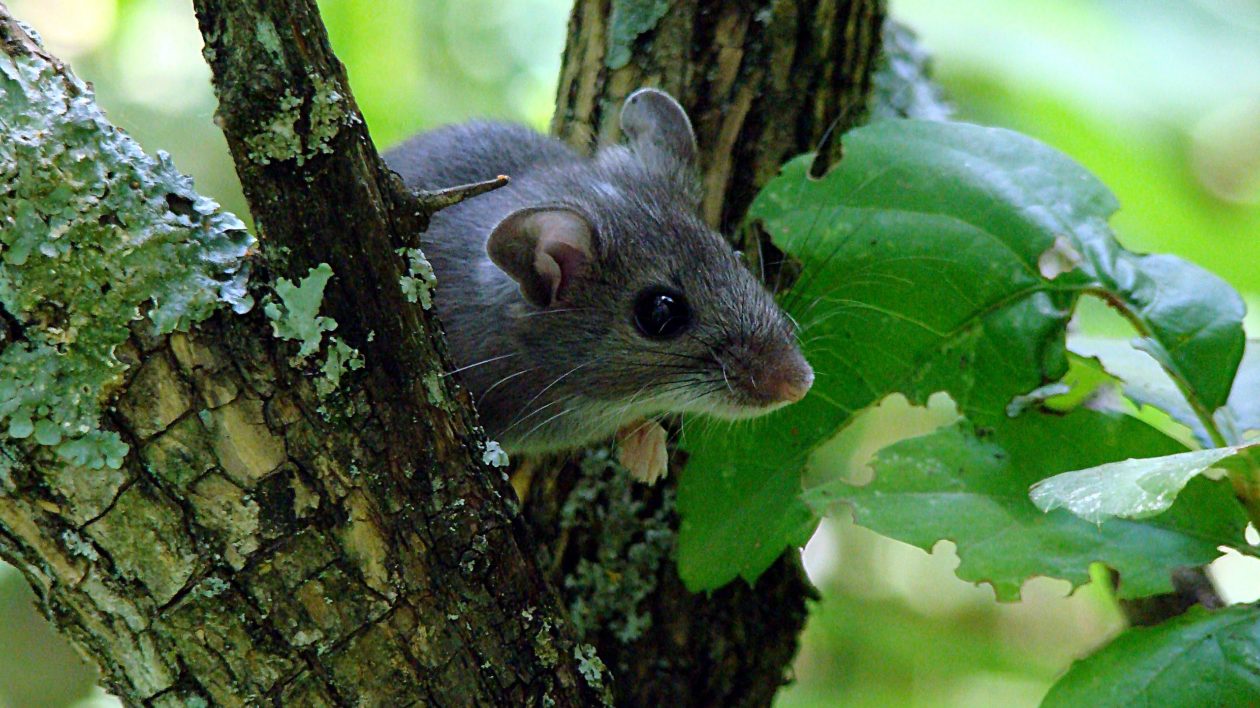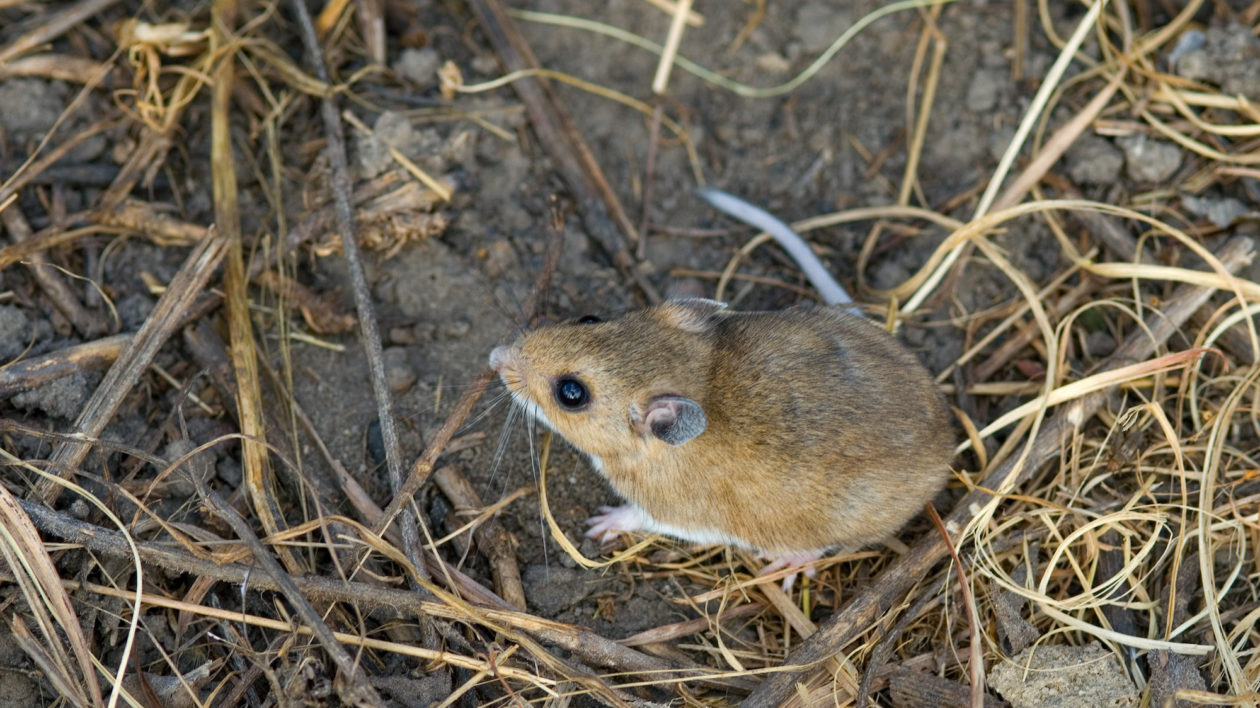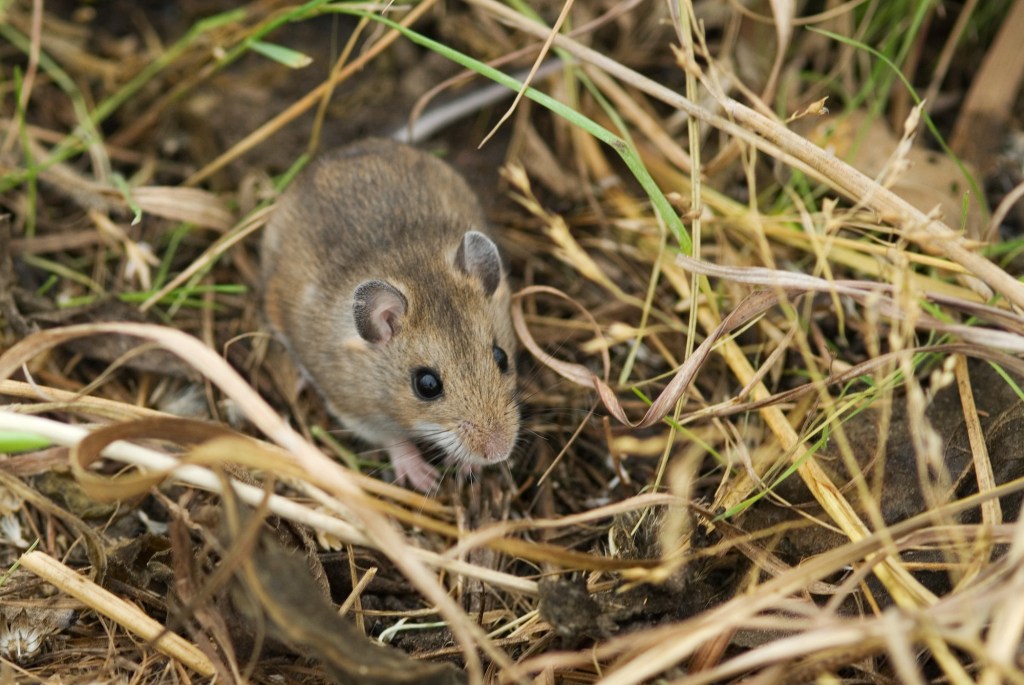Walk outside, into any natural area in North America, and chances are there are deer mice around. You may well not see their 1-ounce bodies and long, thin tails, but they’re there. Deer mice, in all likelihood, are the most common mammal in North America.
Like any animal existing in that kind of abundance, deer mice simultaneously bring food, nutrition, and chaos to a landscape. They feed almost any predator that walks, slithers or flies, but they’re also opportunistic predators that will maim and wound if necessary. They carry deadly diseases.
Deer mice are so much more than pests. There is much to learn about one of the country’s most important prey species, including a few twists that surprise even researchers.
Eat, Breed, Die
In captivity, a deer mouse can live up to eight years. In the wild? Often about a year. Their truncated survival time in the woods, fields, and plains may seem like a limiting factor for population growth, but the opposite is true.
Deer mice reproduce, well, quite a lot. A female reaches sexual maturity in under two months, and carries a litter for about 24 days. That means one female could have a handful of litters each year, with sizes varying from one to 11 depending on plenty of factors and increasingly based on climate change (more on that later).

“They are one of a handful of small mammals that are quintessential generalists,” says Bryan McLean, a professor at the University of North Carolina Greensborough who has studied deer mice for years. “That doesn’t mean they don’t have adaptations to different places where they live, but they do well in a lot of different habitats.”
By “a lot,” he means a lot. Deer mice survive, and thrive, in forests, grasslands, prairie, shrubs, mountains, basins, agricultural areas, and city fields. They thrive in areas disturbed by fire or humans, like reclaimed areas after energy development or fields plowed for crops.
Their range extends from far northern Canada to Mexico, and from the west to east coasts with the exception of portions of the southeastern US. A subspecies called island deer mouse, is one of only four native mammals to the Channel Islands off the coast of California. Each island evolved a different subspecies than is not found anywhere else.
For a tiny mouse, their home ranges can be unsurprisingly small. The US Forest Service estimates the smallest home range for a deer mouse is about .08 acres, or less than a tenth the size of a standard football field. They can also, however, have a home range as big as almost five football fields.

Growing and Shrinking
There’s a principle in ecology called Bergmann’s Rule. It states, generally, that the farther north a species ranges, the bigger it is to stay warm. That’s why brown bears in Alaska tend to be bigger than their Wyoming counterparts, or why white-tailed deer are bigger in Canada than the Florida Keys. Some species follow the rule, others don’t.
Logic would then state, that as climate changes and colder areas become warmer, body sizes are also shifting.
McLean and a team at the Florida Museum tested this hypothesis in deer mice (a species with some of the most abundant museum and database samples) and found mixed results.
Bigger-bodied deer mice were getting smaller, and smaller-bodied deer mice were getting bigger, and neither of these results had much to do with climate change, states a recent paper co-authored by McLean in Scientific Reports.

Instead, urbanization may be creating shorter mice with bigger bodies. “It may be more consistent with body size is variable for other things they need to do other than food like find shelter in small spaces or avoid predators,” he says.
Deer mice also have the ability to grow or shrink their GI tract depending on food resources and energy demands.
“In some cases, it’s up to 30%,” McLean says. “In seasons where resources are more scarce or they need more energy, the GI tract tends to get longer, and/or heavier to increase the amount of time the food is in there to gain calories from it. The biggest GI tracts that we measure are in the winter and in females that are breeding and lactating.”
Climate may also be changing how deer mice breed and litter size. Deer mice had fewer babies at a time in areas with longer growing seasons, according to a paper published in the journal Mammalogy. But they were also able to breed more over the course of a year.

The Good, the Bad, and the Ugly
First, the bad news about these furry, brown creatures with white bellies: They act as vectors for two diseases that humans dread.
The first is Lyme disease. A tick feeds off a deer mouse, which may have Lyme disease, then latches onto a human or another mammal, passing the illness along.
Deer mice are most commonly known for carrying hantavirus, a deadly respiratory disease. The virus sheds through feces or urine, then infects humans if it becomes aerosolized. While hantavirus is dangerous to humans, the Centers for Disease Control recommends avoiding the illness by sealing your house and taking precautions when cleaning barns, sheds and other areas where deer mice may have congregated.
A world without deer mice would be a less interesting one, McLean says. Fewer deer mice would also be a blow to most predators on the landscape from hawks, eagles and owls to coyotes, foxes and snakes.
They’re also very good at eating, which can be a benefit or hindrance to the surrounding natural world.
One study showed that deer mice so effectively eat seeds from weeds and leftover seeds from agricultural harvest in the fall they were providing an essential service to farmers in the Midwest.
In some areas like southwest Wyoming’s sagebrush steppe, their numbers and appetites are becoming a bit of a problem. Deer mice in reclaimed areas are raiding songbird nests, eating not only the eggs, but the fledglings, says University of Wyoming professor Anna Chalfoun.
“Some of the nestlings they will take and eat,” she says. “Others, if it’s of a larger songbird, deer mice will maim so the birds can’t fledge and take them out one by one.”
McLean wasn’t surprised.
“Basically, a lot of little critters we think of as herbivores, mice and voles and things, even ground squirrels and prairie dogs, given the chance to have meat, they will eat meat,” McLean says. “Otherwise they’re so protein limited.”




How do deer mice compare to field mice?
“Field mouse” is not an official common name. It is a name that is often applied to a number of common rodents, including the white-footed mouse and the meadow vole (which are quite different from each other). It is often what people call rodents seen in a lawn or field as a catch-all term, kind of similar to how non-birders call all small birds “sparrows.”
Hope this helps.
Matt Miller
Cool Green Science